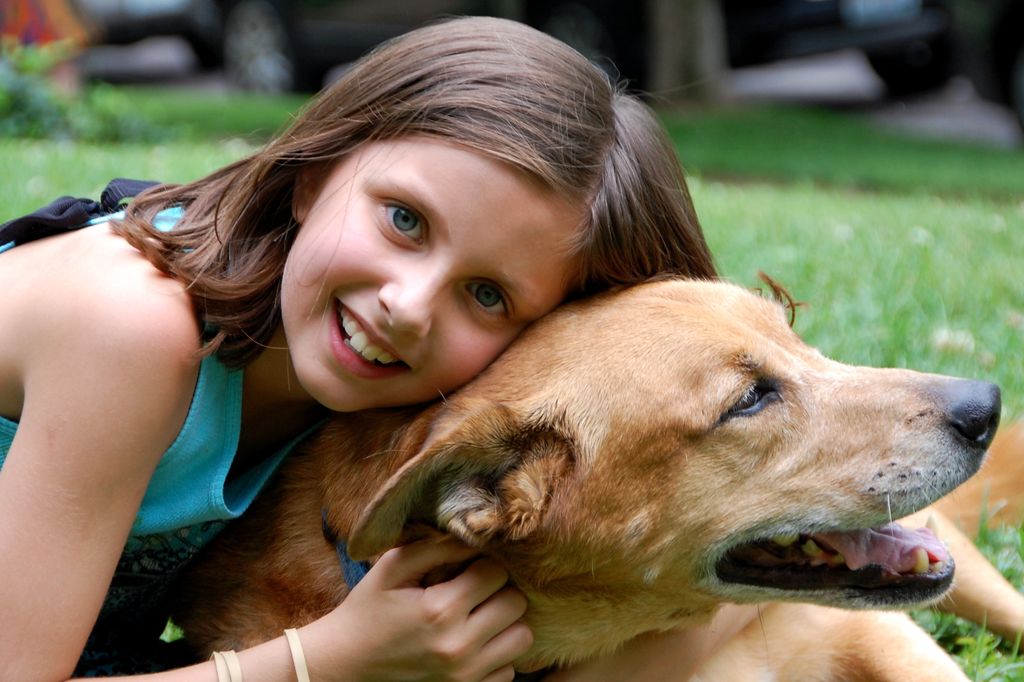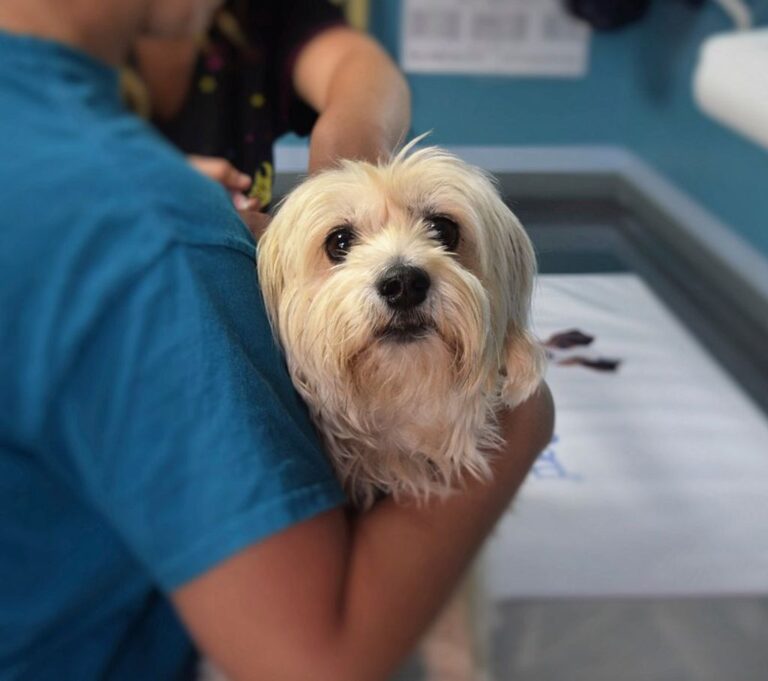Unraveling the Mystery of How Dogs Understand Human Emotions
Dogs have an incredible ability to understand and respond to human emotions. In this article, we will explore the science behind dogs’ emotional intelligence and how they communicate with us. We will also uncover the ways in which dogs comfort us in times of distress, boost our happiness, and serve as therapy animals. Additionally, we will provide training tips to strengthen the human-dog emotional bond and discuss how understanding dogs’ emotions enhances our relationship. By the end of this article, you will have a deeper appreciation for the special connection between humans and dogs.
Key Takeaways
- Dogs have the ability to read human emotions through facial expressions, body language, and scent.
- Dogs provide comfort and support to humans in times of distress, boosting our happiness and well-being.
- Dogs can be trained to respond to human emotions and provide emotional support.
- Building trust and clear communication are essential for strengthening the human-dog emotional bond.
- Understanding and embracing dogs’ emotional quirks can enhance the relationship between humans and dogs.
The Canine Connection: How Dogs Read Our Emotions

The Science Behind Dogs’ Emotional Intelligence
Understanding how dogs perceive and respond to human emotions is a fascinating field of study. Dogs have an innate ability to pick up on our emotional cues, often sensing our moods even before we do. They are highly attuned to our facial expressions, body language, and even our scent. This emotional intelligence allows them to form deep connections with their human companions.
The Role of Facial Expressions in Canine Communication
Facial expressions play a crucial role in how dogs communicate with humans. Understanding what your dog’s facial expressions really mean aids human-canine communication, as does reading your dog’s body language. Dogs communicate holistically, using a combination of gestures, facial expressions, and vocalizations. By observing and understanding these movements, pet owners can respond appropriately to their dog’s needs and emotions.
Sniffing Out Emotions: How Dogs Use Their Sense of Smell
Dogs have an extraordinary sense of smell, capable of detecting scents that are imperceptible to us. Their olfactory ability allows them to uncover hidden secrets and track scents across great distances. From detecting diseases to locating missing persons, dogs play the role of mysterious detectives in the realm of scent. Their noses hold the key to unraveling a world invisible to our senses.
Prolonged and unwavering eye contact from your furry friend can also be slightly unsettling. It’s as if they possess hidden knowledge or secrets that they are yearning to share. So, the next time your dog locks eyes with you, be prepared for a captivating and slightly eerie connection.
And let’s not forget about the power of touch. Dogs use their sense of touch to gather information about their surroundings and the people they interact with. The joyous caress and the untouchable head are all part of the mysterious dance of camaraderie between humans and dogs.
In summary, dogs’ sense of smell, eye contact, and touch all contribute to their ability to sniff out emotions and connect with us on a deeper level.
The Power of Body Language: Understanding Canine Cues
In this article, we will unravel the mystery behind why dogs wag their tails, exploring the rich tapestry of canine communication. Canine Tail Movements: Dive into the fascinating world of canine tail movements, examining the subtle nuances that convey a spectrum of emotions. Tail positioning, speed, and gestures all contribute to a dog’s intricate language. Dog tails come in various shapes and sizes, and each has its own unique way of communicating. A high, stiff tail may indicate alertness or dominance, while a tucked tail signals submission or fear. By paying attention to these movements, we can gain insights into our furry friends’ feelings and intentions.
Unleashing the Secrets: How Dogs Respond to Human Emotions

Empathy Unleashed: How Dogs Comfort Us in Times of Distress
When we’re feeling down or going through a tough time, our furry friends always seem to know. They have an incredible ability to sense our emotions and provide comfort when we need it most. Whether it’s a gentle nudge, a warm snuggle, or a sympathetic gaze, dogs have a way of letting us know that they’re there for us. It’s like they have a sixth sense for empathy, and it’s truly amazing.
The Joy of Unconditional Love: How Dogs Boost Our Happiness
Dogs have a remarkable ability to boost our mental and emotional well-being. Their unconditional love can alleviate feelings of loneliness and depression. When we interact with our dogs, it triggers a release of endorphins and oxytocin, the happiness hormones, in their brain. This not only brings them physical pleasure but also strengthens their emotional bond with us. Trust is also an important aspect of this bond, and when a dog offers their belly for a rub, it’s a sign of trust and security. Each dog is unique, so it’s crucial to understand and respect their preferences and aversions. By recognizing and reciprocating our dog’s happiness, we can deepen our connection with them.
The Healing Power of Paws: Dogs as Therapy Animals
Dogs have an incredible ability to provide emotional support and comfort to those in need. As therapy animals, they play a vital role in creating a healing environment that frees people from their traumas. Whether it’s bringing joy to hospital patients, calming anxiety in individuals with PTSD, or providing companionship to the elderly, therapy dogs have a profound impact on the well-being of humans. Their presence alone can bring a sense of peace and serenity, allowing individuals to feel safe and supported. Paws For Peace: Therapy Dogs & Restorative Justice is a program that brings therapy dogs together with victims and offenders of social and criminal justice, further highlighting the transformative power of these furry companions.
The Language of Licks: Why Dogs Lick Our Tears
When dogs lick our tears, it’s their way of showing affection and offering comfort. A study published in the journal Animal Cognition showed that some dogs lick humans when trying to comfort them, which is a dog behavior that’s consistent with their empathetic nature. It’s a subtle gesture that speaks volumes about their emotional intelligence. Dogs are masters of non-verbal communication, and their tongue becomes a tool for expressing their thoughts and feelings without uttering a word. So, the next time you catch your furry friend with their tongue hanging out, take a moment to appreciate the wonders of their unique anatomy, their ingenious cooling mechanism, and the subtle ways they communicate with us. Dogs truly are remarkable creatures, tongue tales and all!
Training Tips: Strengthening the Human-Dog Emotional Bond

Building Trust: Establishing a Strong Foundation
Building trust is crucial in establishing a strong foundation for our relationship with our dogs. It’s important to remember that trust is a two-way street. We need to show our dogs that they can rely on us and that we will always be there for them. This means being consistent in our actions and providing them with a safe and secure environment. Trust is built through positive experiences and interactions, so it’s important to create opportunities for bonding and connection. By building trust, we can create a strong and lasting emotional bond with our furry friends.
Communicating Clearly: Teaching Dogs to Respond to Emotions
When it comes to teaching dogs to respond to emotions, clear communication is key. Dogs are highly perceptive animals and can pick up on subtle cues and signals from their human companions. Here are a few tips to help improve communication with your furry friend:
- Use consistent verbal cues to associate specific emotions with certain behaviors. For example, saying ‘good boy’ in an enthusiastic tone when your dog is happy.
- Pay attention to body language. Dogs communicate not only through vocalizations but also through their posture, facial expressions, and tail wagging.
- Reward positive responses. When your dog correctly responds to an emotion, such as offering comfort when you’re sad, be sure to reward them with praise or treats.
Remember, building a strong emotional bond with your dog takes time and patience. By communicating clearly and reinforcing positive behaviors, you can strengthen your connection and create a harmonious relationship.
Positive Reinforcement: Rewarding Emotional Support
Positive reinforcement, with rewards like treats and praise, aligns more closely with their desire for engagement and approval. Instead of relying on dominance-based methods, which don’t resonate with their independent nature, we focus on positive reinforcement to strengthen our bond and mutual understanding. By redirecting their dramatic energy into obedience training or agility exercises, we can transform potential chaos into constructive activities. This approach encourages them to channel their dramatic flair into behaviors that enhance our relationship.
Creating a Safe Space: Providing Comfort and Security
When it comes to creating a safe space for our furry friends, it’s important to prioritize their emotional well-being. Dogs thrive in environments where they feel secure and protected. Here are a few tips to help provide comfort and security:
- Establish a designated area for your dog that they can retreat to when they need some alone time or a sense of security.
- Make sure this space is equipped with cozy bedding, toys, and familiar scents to create a calming atmosphere.
- Avoid loud noises or sudden disruptions in this area to maintain a peaceful environment.
Remember, creating a safe space for your dog is essential for their overall happiness and emotional health.
The Mutual Benefits: How Understanding Dogs’ Emotions Enhances Our Relationship

A Two-Way Street: How Our Emotions Affect Dogs
Understanding our emotions and how they impact our furry friends is crucial for building a strong bond. Dogs are highly perceptive creatures, capable of picking up on our moods and mirroring our emotions. When we’re feeling stressed or anxious, our dogs can sense it and may become more anxious themselves. On the other hand, when we’re happy and relaxed, our dogs are more likely to be at ease as well. It’s a two-way street of emotions, where our feelings can directly influence our dogs’ emotional state.
To ensure a positive emotional connection with our dogs, it’s important to be mindful of our own emotions. Taking care of our mental well-being not only benefits us but also has a positive impact on our furry companions. By practicing self-care and managing our stress levels, we can create a calm and harmonious environment for our dogs.
Additionally, open and clear communication is key. Dogs rely on our cues and body language to understand how we’re feeling. Maintaining a calm and confident demeanor can help reassure our dogs and alleviate any anxiety they may be experiencing. It’s important to remember that our dogs are highly attuned to our emotions, so being aware of our own emotional state can greatly enhance our relationship with them.
In summary, our emotions have a profound effect on our dogs. By being aware of our own emotions and practicing self-care, we can create a positive and nurturing environment for our furry friends. Open and clear communication is also essential in building a strong emotional bond. So let’s embrace the two-way street of emotions and strengthen our connection with our beloved dogs.
The Power of Play: Strengthening the Emotional Connection
When it comes to building a strong emotional connection with our dogs, playtime is key. Playing together not only provides physical exercise but also creates a bond based on joy and fun. Whether it’s a game of fetch, a tug-of-war, or simply chasing each other around the yard, play allows us to let loose and be in the moment with our furry friends.
Engaging in play with our dogs also helps us understand their emotions better. We can observe their body language, tail wagging, and facial expressions during play to gauge their mood and level of excitement. It’s a way for us to communicate and connect on a deeper level.
To strengthen the emotional connection through play, here are a few tips:
- Be present and fully engaged during playtime.
- Use positive reinforcement, such as treats or praise, to encourage desired behaviors.
- Incorporate interactive toys and puzzles to stimulate their minds.
- Rotate different types of play activities to keep things interesting.
Remember, play is not just for fun; it’s a powerful tool for strengthening the emotional bond between humans and dogs.
The Art of Active Listening: Tuning in to Canine Needs
When it comes to understanding our furry friends, active listening is key. Observing their body language, listening to their vocalizations, and paying attention to their needs can help us build a stronger bond. Dogs communicate in subtle ways, and by tuning in to their cues, we can better understand their emotions and respond accordingly. Here are a few tips for active listening:
- Maintain eye contact with your dog to show that you are engaged.
- Watch for tail wagging and other body movements that indicate their mood.
- Listen for different vocalizations, such as barks, whines, and growls, which can convey different messages.
- Take note of their energy levels and any changes in behavior, as these can be signs of emotional states.
Remember, active listening is a two-way street. By being present and attentive to our dogs’ needs, we can create a harmonious relationship based on trust and understanding.
Unconditional Acceptance: Embracing Dogs’ Emotional Quirks
Embracing dogs’ emotional quirks is what makes our bond with them so special. Dogs have their own unique personalities and behaviors that may seem strange or quirky to us, but it’s important to remember that these quirks are part of what makes them who they are. Whether it’s a pug snorting like a pig or a Chow Chow refusing to be cuddled, we embrace these quirks with open arms and love them unconditionally.
Here are some tips for embracing dogs’ emotional quirks:
- Be patient: Dogs may have certain fears or anxieties that manifest in unusual ways. It’s important to be patient and understanding, providing them with the support and reassurance they need.
- Celebrate their uniqueness: Instead of trying to change or suppress their quirks, celebrate them! These quirks are what make your dog special and unique.
- Create a safe space: Provide your dog with a safe and comfortable space where they can retreat to when they need some alone time or when they’re feeling overwhelmed.
Remember, embracing dogs’ emotional quirks is all part of the joy and unconditional love they bring into our lives.
Unraveling the Mystery of How Dogs Understand Human Emotions
In conclusion, understanding how dogs understand human emotions is a fascinating journey that deepens the bond between humans and their furry companions. By decoding the language of wagging tails and observing their unique behaviors, we can gain valuable insights into their emotional state and strengthen our connection with them. So, next time your dog wags its tail or gives you a loving gaze, remember that they are telling you a story of their emotions. Embrace this opportunity to engage with them and create a harmonious relationship. Happy bonding with your canine friend!
Frequently Asked Questions
How do dogs understand human emotions?
Dogs understand human emotions through a combination of cues, including facial expressions, body language, and vocal tones. They are highly sensitive to subtle changes in our behavior and can pick up on our emotional states.
Can dogs empathize with humans?
Yes, dogs have the ability to empathize with humans. They can sense when we are sad or distressed and will often try to comfort us by offering gentle touches or cuddles. Their empathetic nature is one of the reasons why they make such great therapy animals.
Do dogs feel emotions like humans do?
While dogs may not experience emotions in the same way humans do, they do have their own range of emotions. They can feel happiness, fear, sadness, and even jealousy. It’s important to understand and respect their emotional needs.
How can I strengthen the emotional bond with my dog?
To strengthen the emotional bond with your dog, spend quality time together, engage in activities that they enjoy, and provide plenty of positive reinforcement. Building trust and clear communication are also key in developing a strong bond.
Why do dogs lick our tears?
Dogs may lick our tears as a way to show comfort and provide emotional support. It’s their way of offering reassurance and showing empathy. Licking can also be a soothing behavior for dogs.
Can dogs sense when we are happy?
Yes, dogs can sense when we are happy. They are highly attuned to our emotional cues and can pick up on positive energy. They may respond by wagging their tails, jumping with excitement, or offering playful behavior.







One Comment